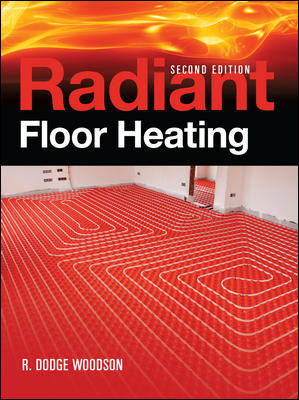
Even
with the utmost care taken, new construction projects can still be a source of
frustrating moisture-related problems.
Last time we looked at some of the ways moisture can wreak havoc on resilient floor. We discussed how damp conditions can compromise underlayment while it is being stored-as well as the importance of acclimating the material before the job. We looked at proper fastening techniques and ways to patch the joints and then sand the joints after they dry. Then, of course, we addressed the proper methods of adhesive application including adequate open times. Now we move to the next step: Moisture that is either already in the underlayment or is introduced from the surface. Remember, in new construction we have to deal with moisture coming not only from the surface, but from underneath as well. In these situations the moisture waits until after the resilient flooring has been laid down before it rears its soggy head. If not handled properly it can be a disaster for both conventional full spread and modified loose-lay installations alike.
The problem seems unavoidable. In new construction projects there are countless ways moisture is introduced into the environment. Consider, for example, that concrete foundations require three pints of water per cubic foot. That translates to 250 gallons of water for a 1,000-square-foot concrete slab. The construction of the walls (one quart of water per square foot of plaster surface), the wall texture and even house wraps designed for energy efficiency also introduce moisture to the job site.
Other considerations include: paint, taping compounds, spills, high humidity and construction delays due to rain. Most of the moisture is allowed to evaporate. If adequate ventilation is provided, a small percentage is absorbed into the subfloors, sheathing, studs and joists. Changes in preferred construction materials also can have an effect. Back in the days when plywood sheathing was used, the moisture would pass through the sheathing. Now when either oriented strand board or waferboard sheathing is used, moisture migration is retarded. Also, the walls used today have such a low permeability factor that almost no moisture can escape through them. Add to this aluminum foil covered insulation (which has zero permeability), and you have almost completely stopped moisture.
In some damp and high humidity climates, there are growing reports of mold and mildew growth on the interior walls of new homes due to trapped moisture. Not only can this lead to indoor air quality problems, it can also lead to floor quality problems. With no moisture migrating through the walls, the only place left for moisture to migrate is through the floors and ceilings. Resilient flooring products work as an effective vapor retarder.
The level of moisture migration is determined by two factors: humidity and temperature. While moisture vapor travels toward equalization (or from a high humidity to a low humidity), temperature is the more critical factor. The warmer the temperature, the more moisture the air can hold. This means that heat will compel the moisture to migrate. Although a portable temporary heater will not cause a problem, once the permanent heat is on, the major moisture migration begins. Unfortunately, all too often this typically occurs after the underlayment is installed, and often, after the resilient floor is in place.
To better understand this, imagine a crawl space that is cold, about 50 degrees Fahrenheit, and damp: 100 percent relative humidity. The subfloor and joist system have a moisture content of 20 percent or greater. Between the subfloor and underlayment, there is a builder Kraft paper (if used, Kraft paper will barely slow moisture migration). The underlayment will have a moisture content of between 8 and 11 percent. With the temperature at 50 degrees there will be little or no migration of moisture.
But when the heat comes on and the temperature goes to 65 degrees with a relative humidity of about 65 percent, here’s what happens when you install a sheet vinyl fully-adhered: the moisture migration starts to move up from the crawl space through the subfloor through the Kraft paper and into the underlayment until it reaches the surface of the sheet vinyl. The moisture will start to accumulate and under severe conditions, condensates. As the moisture accumulates, the underlayment starts to expand. As it expands the first indication that something is wrong is when the underlayment joints start to push up the filler, or the underlayment joints start to peak. In severe cases, the underlayment will start to buckle, pulling the fasteners through the underlayment.
In discussing this problem with other trades I discovered that there is also a higher incidence of joint show-through in the roofing industry, especially on structures with composition roofing. The next time you are in a new housing development, look for this problem.
For floor installers, there is plenty a general contractor can do to address the presence of excess moisture. Those who fail to respond need to understand the fault often lies not with the installation but with the conditioning of the structure.




